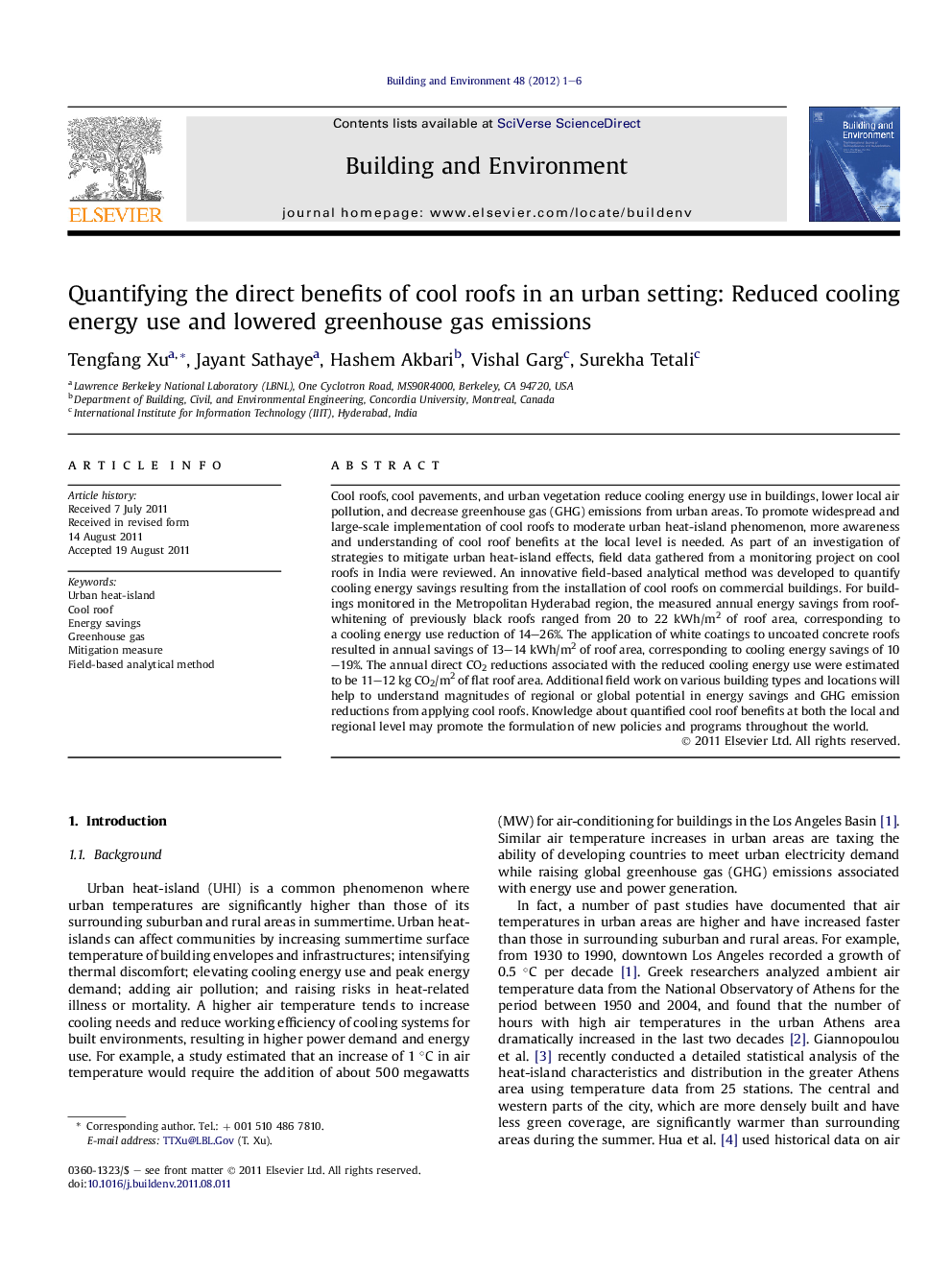| Article ID | Journal | Published Year | Pages | File Type |
|---|---|---|---|---|
| 248786 | Building and Environment | 2012 | 6 Pages |
Cool roofs, cool pavements, and urban vegetation reduce cooling energy use in buildings, lower local air pollution, and decrease greenhouse gas (GHG) emissions from urban areas. To promote widespread and large-scale implementation of cool roofs to moderate urban heat-island phenomenon, more awareness and understanding of cool roof benefits at the local level is needed. As part of an investigation of strategies to mitigate urban heat-island effects, field data gathered from a monitoring project on cool roofs in India were reviewed. An innovative field-based analytical method was developed to quantify cooling energy savings resulting from the installation of cool roofs on commercial buildings. For buildings monitored in the Metropolitan Hyderabad region, the measured annual energy savings from roof-whitening of previously black roofs ranged from 20 to 22 kWh/m2 of roof area, corresponding to a cooling energy use reduction of 14–26%. The application of white coatings to uncoated concrete roofs resulted in annual savings of 13–14 kWh/m2 of roof area, corresponding to cooling energy savings of 10–19%. The annual direct CO2 reductions associated with the reduced cooling energy use were estimated to be 11–12 kg CO2/m2 of flat roof area. Additional field work on various building types and locations will help to understand magnitudes of regional or global potential in energy savings and GHG emission reductions from applying cool roofs. Knowledge about quantified cool roof benefits at both the local and regional level may promote the formulation of new policies and programs throughout the world.
► A new field-based analytical method was developed to quantify actual energy savings. ► Whitening black roof saved cooling energy by 20–22 kWh/m2 roof per year in Hyderabad. ► Whitening concrete roof saved cooling energy by about 13–14 kWh/m2 roof per year. ► Whitening concrete roof reduced direct CO2 emission by 11–12 kg CO2/m2 roof area. ► Applying cool roofs can significantly reduce global energy use and GHG emissions.
